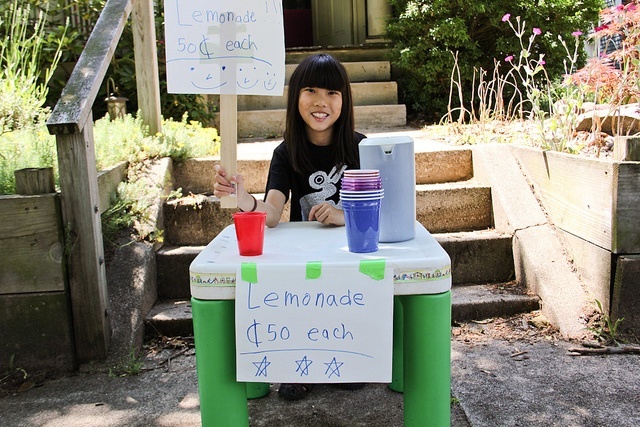Formal education does a great job of teaching children how to read, write, do math, and determine the age of the earth using mass spectrometry, but there’s one lesson that still falls on the shoulders of parents to teach, and that’s financial responsibility. Until there is a classroom devoted to budgets, savings accounts, and investments, parents will need to continue to think of creative ways to impart their monetary wisdom. Use these five fun tricks to help make the lessons stick and help make your kids financially independent.
1. Piggy Bank
A piggy bank should be a fixture in every child’s room. They’re as important as a night light or pajamas with feet built into them. Every chance you get you should drop some change inside, shake it up, and act like it is the greatest thing in the world. Your child may not fully appreciate what is going on at first but eventually they will develop a sense of ownership over their money and create positive memories and attitudes around saving.
2. Lemonade Stand
Tried, tested, and true, the lemonade stand is not only a classic memory for every child, it teaches important lessons about money. By dishing out lemonade to passersby (with adult supervision, obviously) a child can quickly learn basic lessons about supply, demand, and managing income and expenses. Fresh lemonade may taste better and draw a bigger crowd, but nothing multiplies your margins like lemon crystals from a package. Do this right and lend a hand where necessary and you will have a little entrepreneur on your hands in no time.
3. Allowance
Starting from around the age of five you can bring an allowance into the equation. Sit your kids down and have a conversation about responsibility and pitching in around the house in exchange for a little money at the end of the week. An allowance should be your child’s first experience with steady, reliable income and it opens the door to many more lessons about the different uses of money, that things are earned and not an entitlement, and the idea of money as a finite resource.
4. Saving, Spending, Sharing Jars
A great way to drive home the finite nature of money is to expand the notion of the piggy bank to create separate saving, spending, and sharing money jars. Again, this works best with an older child who is getting an allowance. The way it works is each time your child gets some money, they are responsible for dividing it into each of the three jars. The spending jar is for things like candy bars and water guns and other small expenses that pop up during the week; the sharing jar is for buying birthday gifts and nice surprises for friends and family; and the saving jar is off limits for everything but larger, longer-term expenses like a new Lego set or video game. The saving jar transitions nicely into the eventual savings account you should open with your child at the bank.
5. Offer and Encourage Ways to Earn More Money
Finally, if you child has their eye on some extravagant item like roller skates or a new bike but is getting frustrated at saving towards it with a $5 or $10 weekly allowance, give them other opportunities to increase their income. Put a price on household jobs that aren’t part of their regular chores. Clean the attic and make an extra $10. Mow the lawn and that is $5 in your pocket. Even help your kids offer their services to your trusted friends around the neighborhood. This will help instill a strong work ethic and a mental connection between effort and reward.
Featured photo credit: Steven Depolo via flickr.com

















































